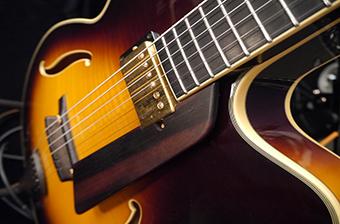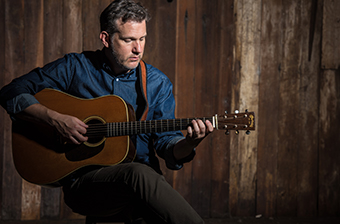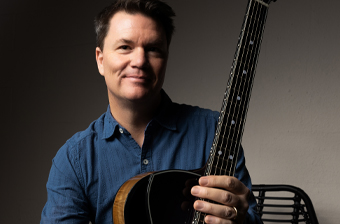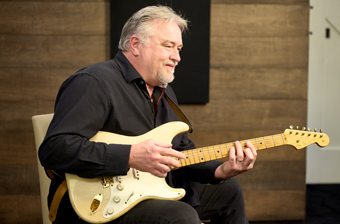Online Guitar Lessons
14 GREAT guitar teachers help you play like you dreamed you would.

About Our Guitar Lessons
14 master guitarists deliver the best music courses on the Internet. Choose from rock, jazz, blues, country, bluegrass, classical and beginner acoustic.
Guitar Courses
-
![Session Player Toolkit with Dave Isaacs Session Player Toolkit with Dave Isaacs]()
Dave Isaacs
Session Player ToolkitPartner with the premier Nashville educator to master the skills you need to become a well-rounded guitarist.
-
![Flatpick Guitar School with Bryan Sutton Bryan Sutton online music lessons]()
Bryan Sutton
Bluegrass GuitarGrammy® and multi-IBMA Guitar Player of the Year teaches bluegrass guitar lessons for everyone.
-
![Flamenco Guitar with Noa Drezner Flamenco Guitar with Noa Drezner]()
Noa Drezner
Flamenco GuitarThe flamenco master teaches her unique techniques in this comprehensive guitar course for all levels.
-
![Blues Guitar with Seth Rosenbloom Blues Guitar with Seth Rosenbloom]()
Seth Rosenbloom
Blues GuitarThe guitar master teaches his unique style and approach to aspiring blues players of every level.
-
![Acoustic Fingerstyle Guitar with Andy McKee Acoustic Fingerstyle Guitar with Andy McKee]()
Andy McKee
Acoustic Fingerstyle GuitarThe acoustic guitar virtuoso teaches his innovative fingerstyle methods in a course designed for all levels.
-
![Americana Roots with Keb' Mo' Americana Roots with Keb' Mo']()
Keb' Mo'
Americana RootsSecure lifetime access to the entire three-volume guitar course taught by legendary blues master, Keb’ Mo’!
-
![Flatpicking Academy with Tyler Grant Flatpicking Academy with Tyler Grant]()
Tyler Grant
GuitarThe National Flatpicking Champion teaches his guitar methods in this comprehensive course for all levels.
-
![Rock Guitar with Paul Gilbert Paul Gilbert online music lessons]()
Paul Gilbert
Rock GuitarThe Grammy®-nominated rock guitarist breaks down his indestructible playing techniques in an approachable way.
-
![Fingerstyle Guitar with Sean McGowan Fingerstyle Guitar with Sean McGowan]()
Sean McGowan
Fingerstyle Jazz GuitarJoin the jazz guitar master as he teaches his critically acclaimed sound & style to players of all levels.
-
![Country Guitar with Guthrie Trapp Country Guitar with Guthrie Trapp]()
Guthrie Trapp
Electric Country GuitarThe Nashville guitar icon teaches his signature Telecaster techniques, from beginner riffs to advanced solos.
-
![Blues Rock Guitar with Jared James Nichols Blues Rock Guitar with Jared James Nichols]()
Jared James Nichols
Blues Rock GuitarWorld-renowned riff master teaches blues and hard rock guitar lessons for players of all levels.
-
![Beginners Guide to Rock Guitar Beginners Guide to Rock Guitar]()
Beginner's Guide
Rock GuitarDesigned for first-time players, learn rock guitar basics and classic rock songs from a Berklee professor.
-
![Bluegrass Guitar with Chris Eldridge Bluegrass Guitar with Chris Eldridge]()
Chris Eldridge
Bluegrass Guitar“Punch Brothers” co-founder and acoustic guitar virtuoso teaches bluegrass guitar for players of all levels.
-
![Beginner Acoustic Beginners Guide to Acoustic Guitar]()
Beginner's Guide
Acoustic GuitarPerfect for new or first time players, especially designed for adults. Learn acoustic guitar basics and easy guitar songs.
-
![Blues Guitar with Keith Wyatt Keith Wyatt teaching online blues guitar lessons]()
Keith Wyatt
Blues Guitar"The Blasters" lead guitarist teaches classic and modern blues to Texas roadhouse.
-
![Fingerstyle Guitar Lessons with Martin Taylor Martin Taylor]()
Martin Taylor
Fingerstyle Jazz GuitarThe 14-time British Jazz Award recipient teaches his signature fingerstyle guitar playing for all skill levels.
-
![Classical Guitar Lessons with Jason Vieaux Jason Vieaux]()
Jason Vieaux
Classical GuitarThe Grammy® award winner, performer & noted professor teaches classical guitar lessons for all players.
-
![Jazz Guitar with Dave Stryker Dave Stryker]()
Dave Stryker
Jazz GuitarThe chart-topping guitar veteran shares essential warm-up exercises, improvisational jazz secrets, and more.
-
![Dobro & Lap Steel with Andy Hall Andy Hall]()
Andy Hall
Dobro & Lap SteelThe Infamous Stringduster’s and multi-IBMA award winner teaches Dobro & lap steel for players of all levels.
-
![Jazz Improv Guitar with Chuck Loeb Chuck Loeb]()
Chuck Loeb
Jazz Improv GuitarThe late guitar mastermind lives on in hundreds of video lessons, spanning basic to signature jazz guitar skills.
Why Learn Guitar From ArtistWorks?
Start by learning about our unique Video Exchange Learning for Guitar
Learn guitar at your own pace, on your own schedule
Hundreds of Guitar Lessons, for all levels, from beginner to advanced.
Multiple popular genres to choose from. Acoustic and electric.
Play the video in slow motion and utilize video looping

Sign Up for a Free Lesson
Choose an instrument and style, and we’ll send you free lessons that are tailored to your musical goals. You’ll also receive exclusive discounts, news about our latest courses, and much more.


























